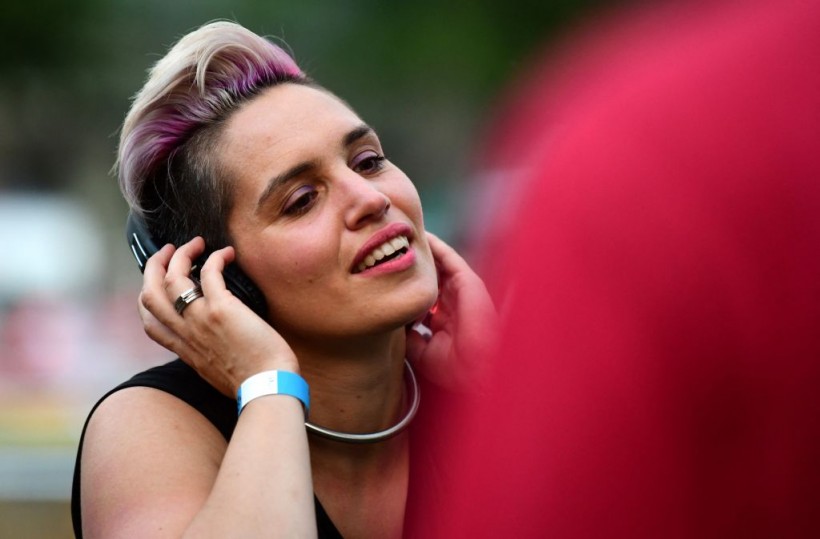Exeger, a Swedish Company introduced Powerfoyle, its solar panels that are only 2mm thick. The technology is based on strips of titanium dioxide covered in natural dye, as reported by BBC.

(Photo : INA FASSBENDER/AFP via Getty Images)
A woman dances while listening to music over headphones during a 'Headphone Disco' event at the Kennedyplatz plaza in Essen, western Germany on July 9, 2021.
The dye can absorb photos from light that is converted into electrons. Although the titanium dioxide is less efficient that silicon-based solar panels, it is thinner, more affordable, and easier to produce.
Solar-Powered Headphones
The solar-powered headphones still come with a built-in battery that can power up to 80 hours of playback time. It is the battery that the Powerfoyle strip charges.
Currently, the technology can create one hour's worth of power from 20 minutes of summer sunshine. The panels can also create some power from artificial light, such as indoor lighting. It also has a power socked should back-up power will be required at night after heavy usage.
In August, Urbanista, a Swedish lifestyle audio brand, launched Urbanista Phoenix, which is the world's first true wireless earbuds with noise canceling and solar-powered charging. It was last year when Urbanista partnered with Exeger to launch the Urbanista Los Angeles headphones. They were the first to use the Powerfoyle technology in the world.
The Urbanista Phoenix users the Powerfoyle solar cell material on their charging case, and it has batteries that are continuously being charged in their case and exposed to almost any outdoor or indoor light sources.
Also in August of this year, Adidas released solar-powered headphones, the RPT-02, that uses Powerfoyle. According to the company, the RPT-02 SOL is self-charging sport headphones made from recycled plastics and powered by light. The headphones can play music for up to 80 hours on a full charge.
Adidas wearers can determine where the strongest light is coming from through a light indicator on the side of the headband. It also lets users track their charge and battery status in real-time. The latest model of headphones is said to be sweat and splash-proof.
Solar-Powered "Things" Grow
As solar power continues to grow, there is a push to create more solar-powered products, from cars and to lamps. Although most of these are early stage prototype or concept, solar-powered products are growing in solar charging space.
It is also important to note that whether a product is solar powered or not, it can be charged with the help of solar panels.
The idea of solar power has been around for decades, but it is only now that the technology is improving enough to make it a viable option for consumers. Solar-powered products become more efficient as it becomes easier to use. This is evident in solar-powered watches, small fans, and other small devices.
Related Article: Adidas Goes Green: New Solar Powered Headphones with Theoretically Infinite Power to Launch
This article is owned by Tech Times
Written by April Fowell









